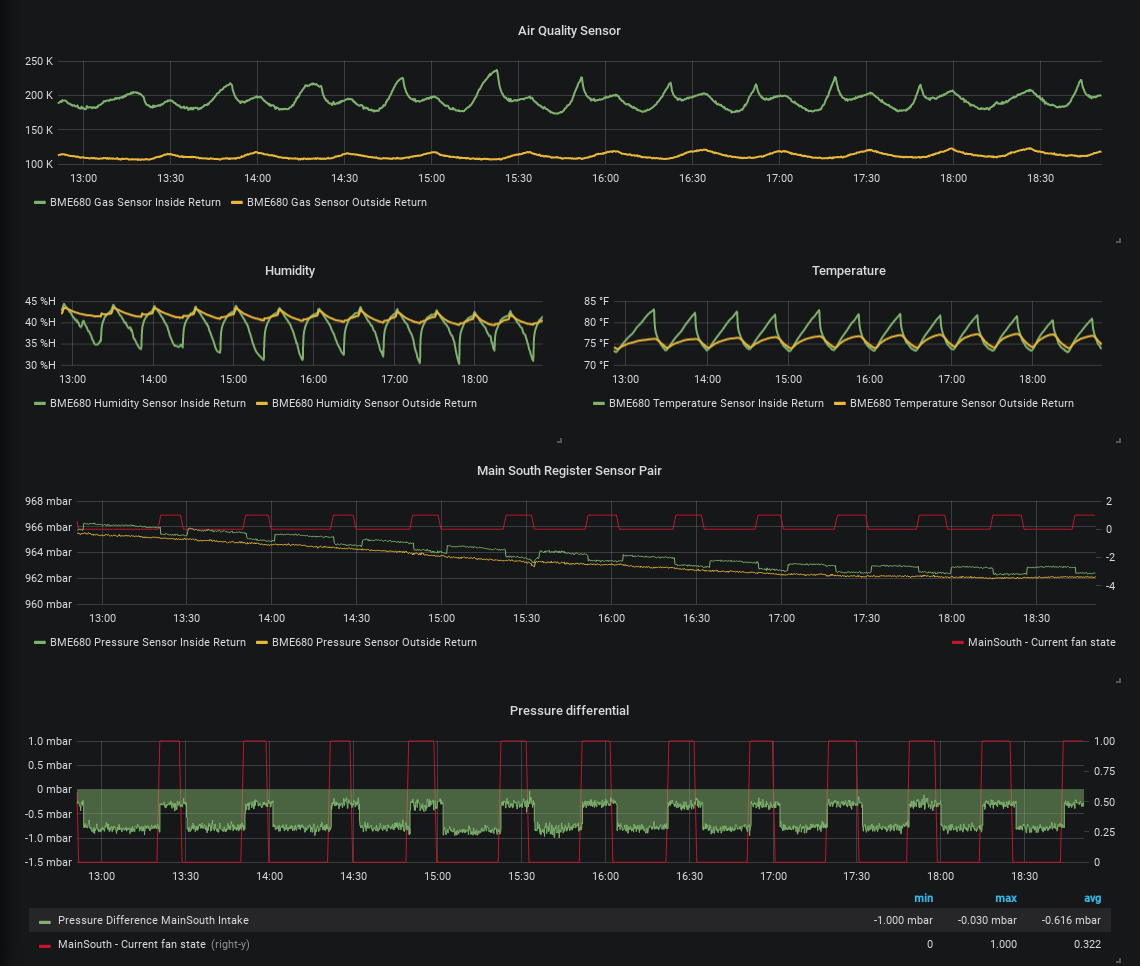Lets see some cool things!

Here is a graph showing the inside (on the "filtered" side) and outside (the house interior). This is the air quality sensor in Ohms. Remember, that higher numbers are better quality.
A few things to note
- The normally high values of 200k or so are produced when the AC is on. That huge dip, is when I turn the AC off for 1-2 hours.
- Notice that it eventually reached equilibrium with the other sensor.
- When the AC switches back on, the "quality" is almost immediately improved.
- This also tells me that the sensors aren't just producing random numbers. When allowed to sit long enough, in the same air, they produce the same number.

Now this is a fun one. The red lines are where the fan is ON. What can we learn here?
- When the air sits stale in the upper part of the return, it gets HOT.
- The air in the return loses humidity too!
- I'm not adjusting here for the 0.89 offset of the pressure sensors in the graphs. Once you do a little math in your head on this, what it shows is that there is *measurable* negative pressure inside the return when the AC is ON.
- I don't necc. need to adjust for the 0.89 here, because what we are looking for, is that as the filter gets dirty, the difference changes noticeably, not so much the actual value yet.

One last graph here. My AC unit runs the fan, all by itself, with the compressor off, for a few minutes at the end of every cycle. By carefully discarding values, I can now see those numbers. Here it shows an average of 413 watts over 6 hours. So now we are all set up to do actual experiments!
 Tim Rightnour
Tim Rightnour
Discussions
Become a Hackaday.io Member
Create an account to leave a comment. Already have an account? Log In.